AESOP -- Vita et fabulae Aesopi , in Greek and Latin. Greek recension of the Byzantine monk Planudes (early 14th century), Latin translations by Rinucius of Arezzo (ca. 1395 - after 1456) and Bonus Accursius of Pisa (d. ca. 1485). Edited by Bonus Accursius. [Milan:] Bonus Accursius, [ca. 1478]. Median 4° (230 x 160mm), 3 parts in one volume. Collation: a-d 8 (a1r-v Rinucius's dedication to Cardinal Antonio de la Cerda of St. Chrysogonus, a1v-2r preface, a2r-d8v Aesopi Vita ), e-g 8 h 4 (e1r-h3v Argumentum fabularum , Rinucius's Latin translation of Aesop's Fables, h4 blank); A-D 8 (A1 Accursius's Latin dedication to Johannes Franciscus Turrianus, A2r-D8v Life of Aesop in Greek), E 8 2 f- 2 h 8 i 6 (E1r-i6r Aesop's Fables in Greek, i6v blank); 2 a- 2 b 8 2 C- 2 D 8 2 E 6 ( 2 a1r blank, 2 a1v Accursius's Latin dedication to Turrianus, 2 a2r- 2 E6r a selection of 61 fables repeated from the 100 printed in Greek, with a literal Latin translation by Accursius, in parallel columns, 2 E6r colophon: Bonus Accursius pisanus impressit: qui non doctorum hominum sed rudium ac puerorum gratia hunc laborem suscepit , 2 E6v blank). 167 leaves (of 168, without blank h4). Unwatermarked paper throughout. Pinholes preserved. Types 1:119R and 2:119Gk, the latter originally cut by Demetrius Damilas for Dionysius Paravisinus. 25 lines, double column in part 3. Initial-spaces with printed guide-letters. Printed signatures in parts 1 and 3, signatures of part 2 stamped in extreme lower right corners. Red paragraph marks supplied in manuscript. (Small hole in final leaf repaired, very minor stains, a few stamped signatures cropped.) Green morocco gilt, by Charles Lewis multiple fillets, floral tools, Botfield arms in centre of sides, spine lettered in compartments, gilt edges. Provenance : Josephus Poirot, imperial notary public (?17th-century circular stamps); Payne & Foss, "Recently imported from Italy" (Acquisitions list p. 1); sold ca. 1830 to Beriah Botfield at 25 gns. EDITIO PRINCEPS and -- with the possible exception of the ca. 1474 edition of Batrachomyomachia (H 8783, Spencer copy unique), attributed to Ferrandus at Brescia or Belfortis at Ferrara -- THE FIRST APPEARANCE IN PRINT OF ANY GREEK CLASSICAL TEXT. Fourth edition of Rinucius's Latin translation, FIRST EDITION of Accursius's translation. This Aesop shares with Accursius's more precisely datable Crastonus (see lot 40) the same Greek fount as well as the dedicatee; its unwatermarked paper is also one of the main stocks in the Crastonus. In 1480 Accursius already used a new Greek type 3:125 for his Lascaris (H 9921), which was also employed in the 1481 Psaltery (see lot 1), and the Gesamtkatalog's dating of the Aesop ("um 1480") is therefore too conservative. Already by the end of the 5th century B.C. the body of native Greek Fable was generally ascribed to Aesop, said to have been a slave on Samos in the 6th century; his name was familiar to Aristophanes and Plato. In the late Middle Ages and the Renaissance, Aesop became a school-text, which explains the large number of editions and their extreme rarity. Accursius says in the colophon that he undertook this labour not for scholars but for beginners and children. EXTREMELY LARGE AND VERY FINE COPY, with most of the stamped signatures preserved. It is substantially taller and wider than the Richard Copley Christie copy (sold in 1988), the Haven O'More copy (sold in 1989), and the Cracherode, Grenville and George III copies in the British Library. H *265; GW 313; Pr 5963; BMC VI, 754 (IB. 26555, 26555a-b); Goff A-98; IGI 61; Rogledi Manni 13; Flodr, Aesopus 2; Proctor, Printing of Greek pp. 49, 59-61; Barker, Greek Script & Type p. 31; N.G. Wilson, From Byzantium to Italy p. 96. Botfield 171-72.
AESOP -- Vita et fabulae Aesopi , in Greek and Latin. Greek recension of the Byzantine monk Planudes (early 14th century), Latin translations by Rinucius of Arezzo (ca. 1395 - after 1456) and Bonus Accursius of Pisa (d. ca. 1485). Edited by Bonus Accursius. [Milan:] Bonus Accursius, [ca. 1478]. Median 4° (230 x 160mm), 3 parts in one volume. Collation: a-d 8 (a1r-v Rinucius's dedication to Cardinal Antonio de la Cerda of St. Chrysogonus, a1v-2r preface, a2r-d8v Aesopi Vita ), e-g 8 h 4 (e1r-h3v Argumentum fabularum , Rinucius's Latin translation of Aesop's Fables, h4 blank); A-D 8 (A1 Accursius's Latin dedication to Johannes Franciscus Turrianus, A2r-D8v Life of Aesop in Greek), E 8 2 f- 2 h 8 i 6 (E1r-i6r Aesop's Fables in Greek, i6v blank); 2 a- 2 b 8 2 C- 2 D 8 2 E 6 ( 2 a1r blank, 2 a1v Accursius's Latin dedication to Turrianus, 2 a2r- 2 E6r a selection of 61 fables repeated from the 100 printed in Greek, with a literal Latin translation by Accursius, in parallel columns, 2 E6r colophon: Bonus Accursius pisanus impressit: qui non doctorum hominum sed rudium ac puerorum gratia hunc laborem suscepit , 2 E6v blank). 167 leaves (of 168, without blank h4). Unwatermarked paper throughout. Pinholes preserved. Types 1:119R and 2:119Gk, the latter originally cut by Demetrius Damilas for Dionysius Paravisinus. 25 lines, double column in part 3. Initial-spaces with printed guide-letters. Printed signatures in parts 1 and 3, signatures of part 2 stamped in extreme lower right corners. Red paragraph marks supplied in manuscript. (Small hole in final leaf repaired, very minor stains, a few stamped signatures cropped.) Green morocco gilt, by Charles Lewis multiple fillets, floral tools, Botfield arms in centre of sides, spine lettered in compartments, gilt edges. Provenance : Josephus Poirot, imperial notary public (?17th-century circular stamps); Payne & Foss, "Recently imported from Italy" (Acquisitions list p. 1); sold ca. 1830 to Beriah Botfield at 25 gns. EDITIO PRINCEPS and -- with the possible exception of the ca. 1474 edition of Batrachomyomachia (H 8783, Spencer copy unique), attributed to Ferrandus at Brescia or Belfortis at Ferrara -- THE FIRST APPEARANCE IN PRINT OF ANY GREEK CLASSICAL TEXT. Fourth edition of Rinucius's Latin translation, FIRST EDITION of Accursius's translation. This Aesop shares with Accursius's more precisely datable Crastonus (see lot 40) the same Greek fount as well as the dedicatee; its unwatermarked paper is also one of the main stocks in the Crastonus. In 1480 Accursius already used a new Greek type 3:125 for his Lascaris (H 9921), which was also employed in the 1481 Psaltery (see lot 1), and the Gesamtkatalog's dating of the Aesop ("um 1480") is therefore too conservative. Already by the end of the 5th century B.C. the body of native Greek Fable was generally ascribed to Aesop, said to have been a slave on Samos in the 6th century; his name was familiar to Aristophanes and Plato. In the late Middle Ages and the Renaissance, Aesop became a school-text, which explains the large number of editions and their extreme rarity. Accursius says in the colophon that he undertook this labour not for scholars but for beginners and children. EXTREMELY LARGE AND VERY FINE COPY, with most of the stamped signatures preserved. It is substantially taller and wider than the Richard Copley Christie copy (sold in 1988), the Haven O'More copy (sold in 1989), and the Cracherode, Grenville and George III copies in the British Library. H *265; GW 313; Pr 5963; BMC VI, 754 (IB. 26555, 26555a-b); Goff A-98; IGI 61; Rogledi Manni 13; Flodr, Aesopus 2; Proctor, Printing of Greek pp. 49, 59-61; Barker, Greek Script & Type p. 31; N.G. Wilson, From Byzantium to Italy p. 96. Botfield 171-72.





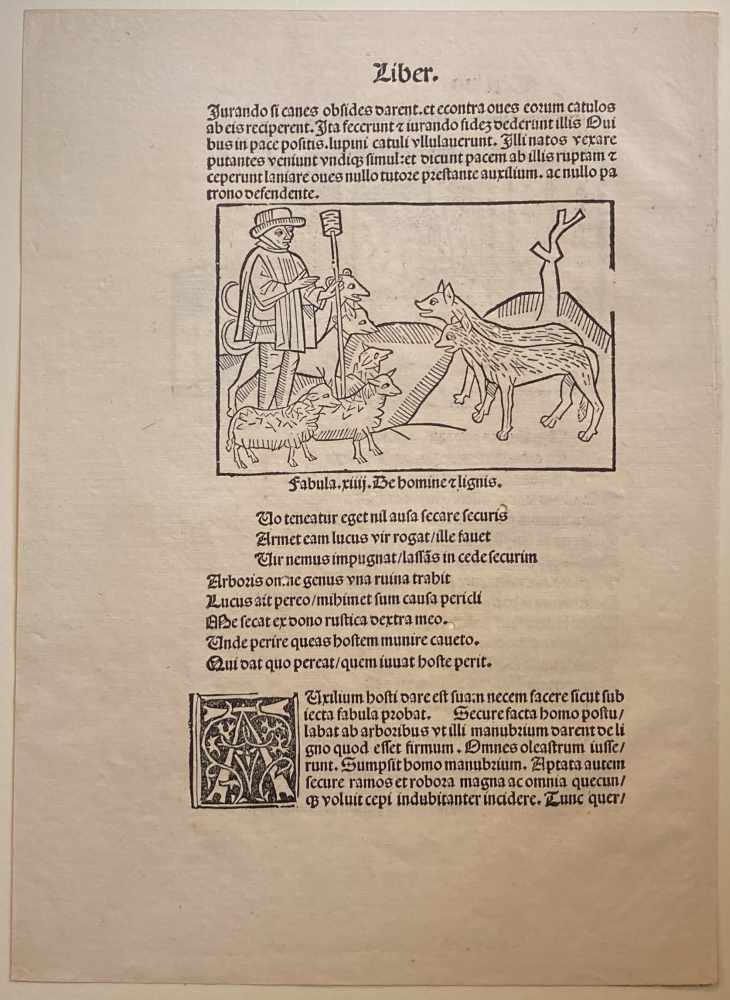

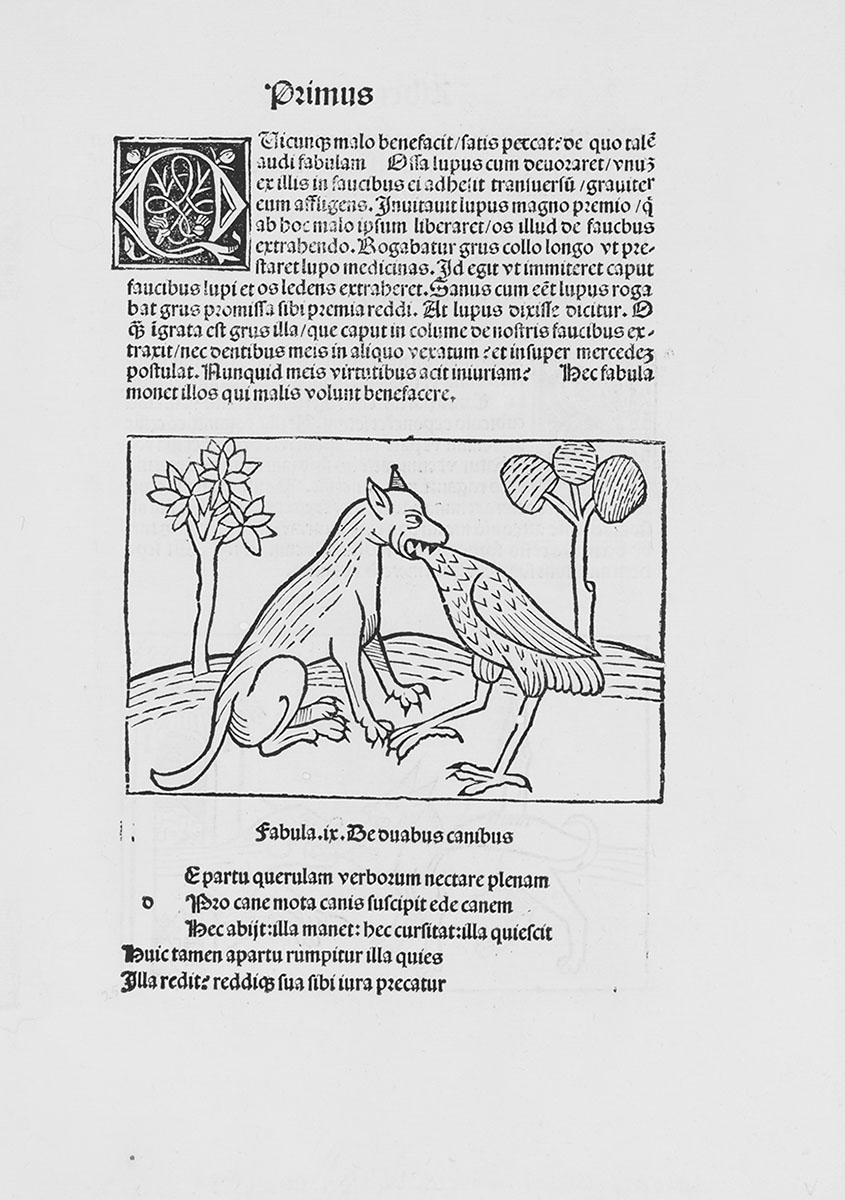

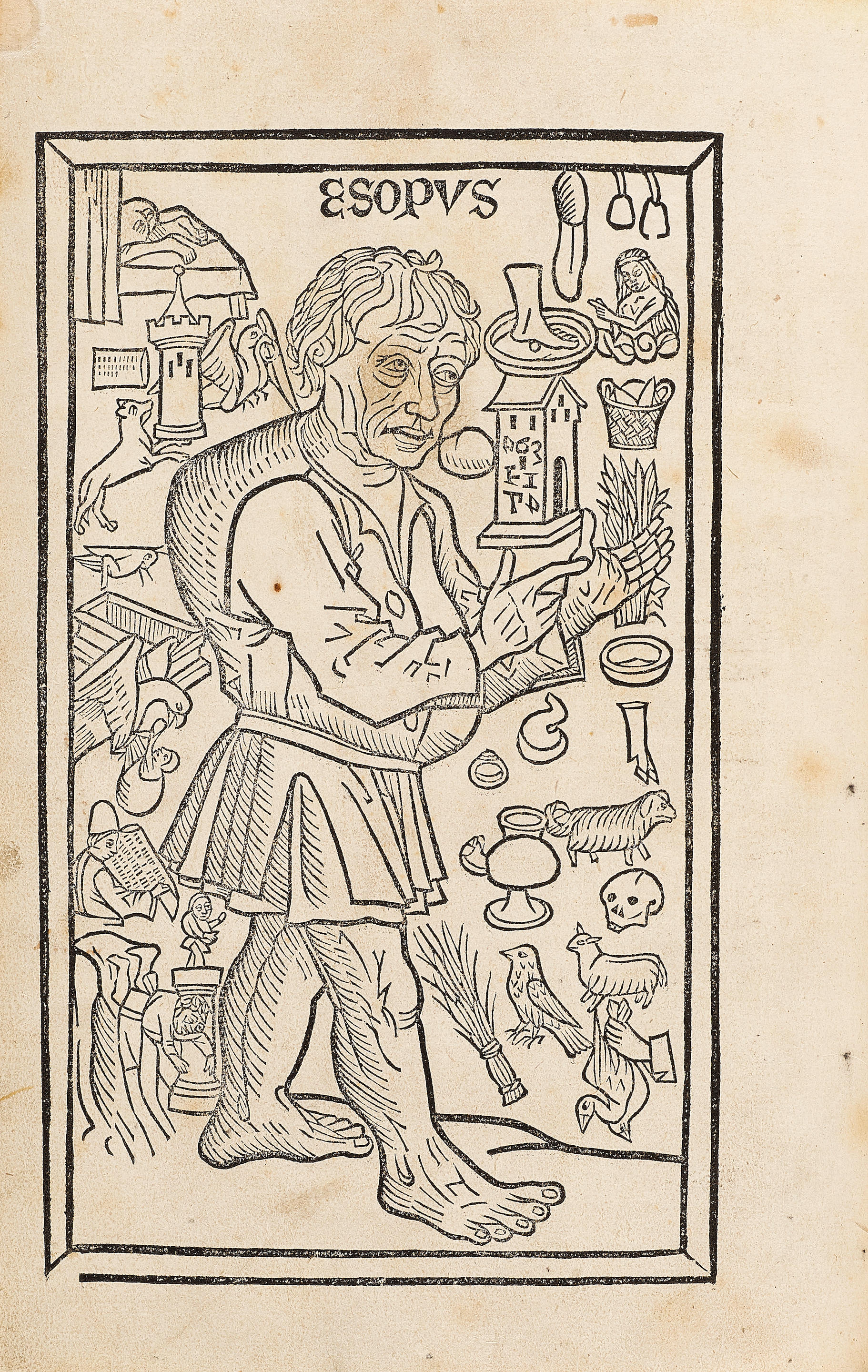
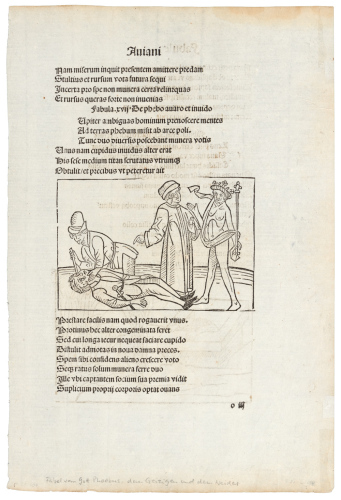
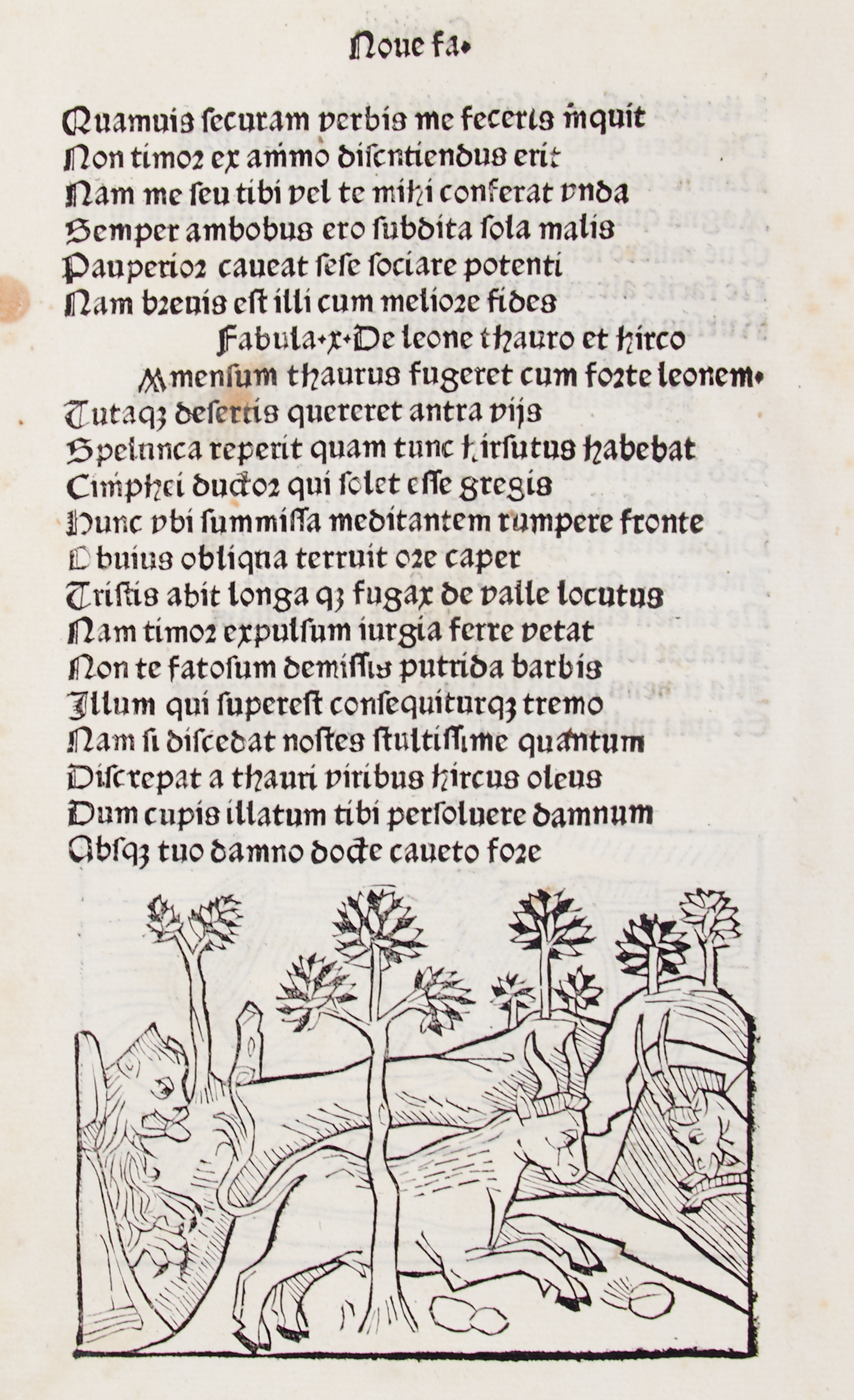
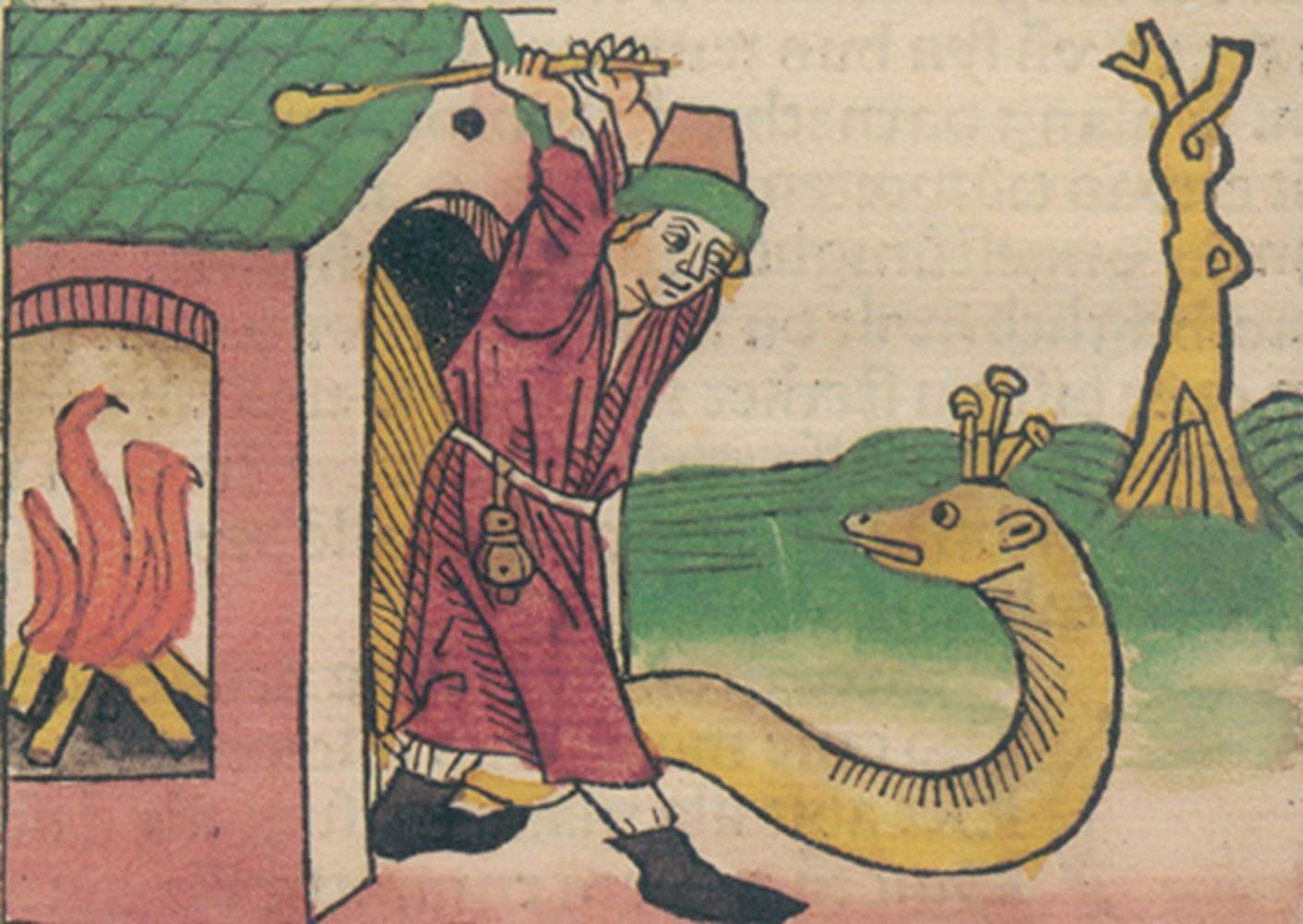


Testen Sie LotSearch und seine Premium-Features 7 Tage - ohne Kosten!
Lassen Sie sich automatisch über neue Objekte in kommenden Auktionen benachrichtigen.
Suchauftrag anlegen